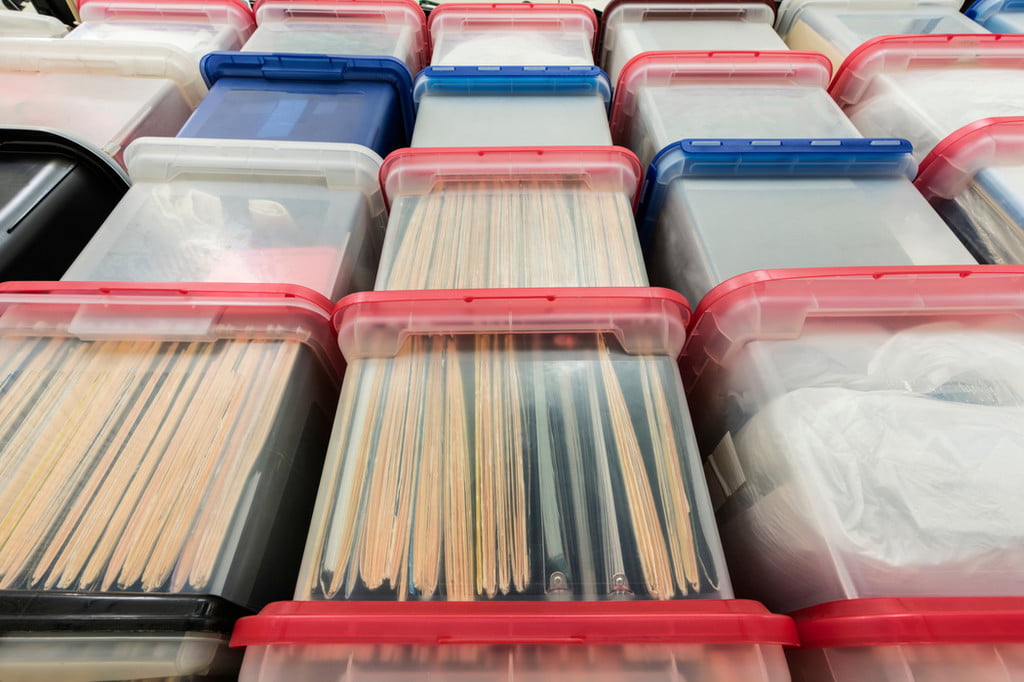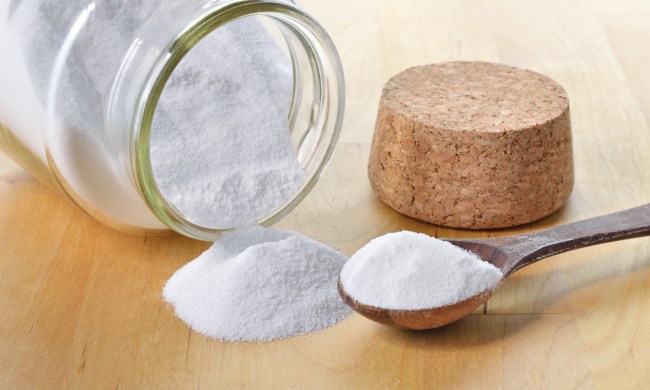Is your basement your home’s catch-all for clutter? You’re not alone. Many people use the “out of sight, out of mind” mentality when it comes to their less-than-tidy basement, filling it with a mix of seasonal decor, treasured family mementos, tools, and plain-old trash. But your basement can be so much more.
Whether you plan to turn your basement into a space for the kids to gather with their friends, a man-cave for the guys, or you just want to find the things you are looking for when you need them, organizing your basement is always a good idea. If you’re feeling overwhelmed and don’t know how to start the basement organizing process, we’re here to help. Our simple tips will show you how to organize your basement and make it easier than you thought possible.
 Start fresh
Start fresh
Before you begin any basement organizing project, you’ll need to start fresh. Remove everything from your basement and find a suitable “staging site” to temporarily house everything—the garage or even the backyard (weather permitting).
If your basement is too large to tackle the entire cleanup at once, section it off and do it in stages and by categories. For example, start with Christmas decorations, tools, or boxed baby items. Do the same process for each category of items.
Sort: This takes the most time, but it’s where your newfound organization will really pay off. Go through every item, and every box, putting things into one of three categories:
- Keep
- Donate/Sell
- Trash
When you decide to keep something, be sure it’s something you really need, use, or love, and then give it a quick clean before putting it back into the basement. Utilize plastic storage bins and other organizing products to keep items together by category and label every single box for easy identification. Repeat the process for every category and every part of the basement.
 Clean and paint
Clean and paint
Now that the basement is empty, it’s time to give each section of the room a thorough cleaning.
Walls, floors, and windows should be vacuumed, swept, and washed until they are sparkling clean. Scrub walls and floors with detergent and water, followed up with a rinse of a diluted household bleach solution.
Note: make sure windows are open for proper ventilation.
After the walls and floors dry, paint the walls for a fresh, clean look. Note: If you have moisture issues in your basement, start with a mold-retardant and waterproofing primer before painting.
 Organizing essentials
Organizing essentials
Now that you’ve thinned out your clutter and cleaned up your basement, it’s time to organize.
- Plastic bins do a far better job at keeping out moisture than cardboard boxes, so swap out any cardboard storage containers for plastic. Remember to label every bin for easy identification of the items inside.
- Multi-tier shelves maximize your wall storage space and are perfect for storing paint, cleaning supplies, and other items you commonly need or use. Add hooks for storing extension cords, gardening tools, and brooms.
- Don’t forget the stairwell! Good organization takes advantage of every square inch of storage potential, so think of the stairwell as an extension of the basement and use it for floating shelves, wall-mounted racks, and other storage solution items.
- Heavy-duty hanging hooks can keep bicycles, beach umbrellas, and chairs stored for winter without taking up a single inch of available floor space.
- Cubbies and customized built-in storage may be the answer if your basement is part of your family’s living space. They’ll provide ample storage and functionality while improving the aesthetic appeal of the room. There are many pre-made storage solutions available online or at your local home store, or you can DIY your own to suit your room’s unique style.
- Wall-mounted pegboards take cluttered tools, cleaning or crafting supplies, and turn them into an organization masterpiece. Customize yours with wire racking units, hooks, mountable baskets, and more.
- Curtains can be used for more than windows – try adding a tension rod and curtain to hide storage areas from sight.
- Old cabinets from your kitchen renovation can find new life as basement storage. Mount cabinets above your washer and dryer for holding detergents, bleach, and other laundry essentials, or use them for extra pantry space for canned goods, paper towels, cleaning supplies, and more.
It’s easy for your basement to turn into the catch-all area of your home, but we’ve shown you how easy it can be to restore organization and sanity to even the messiest space. The trick is to purge what you’re not using and keep only the items you and your family need and love. Stick to your organization plan and take advantage of the storage items you’ve purchased or made to keep clutter at bay and stay organized every day.
 Start fresh
Start fresh Clean and paint
Clean and paint Organizing essentials
Organizing essentials


